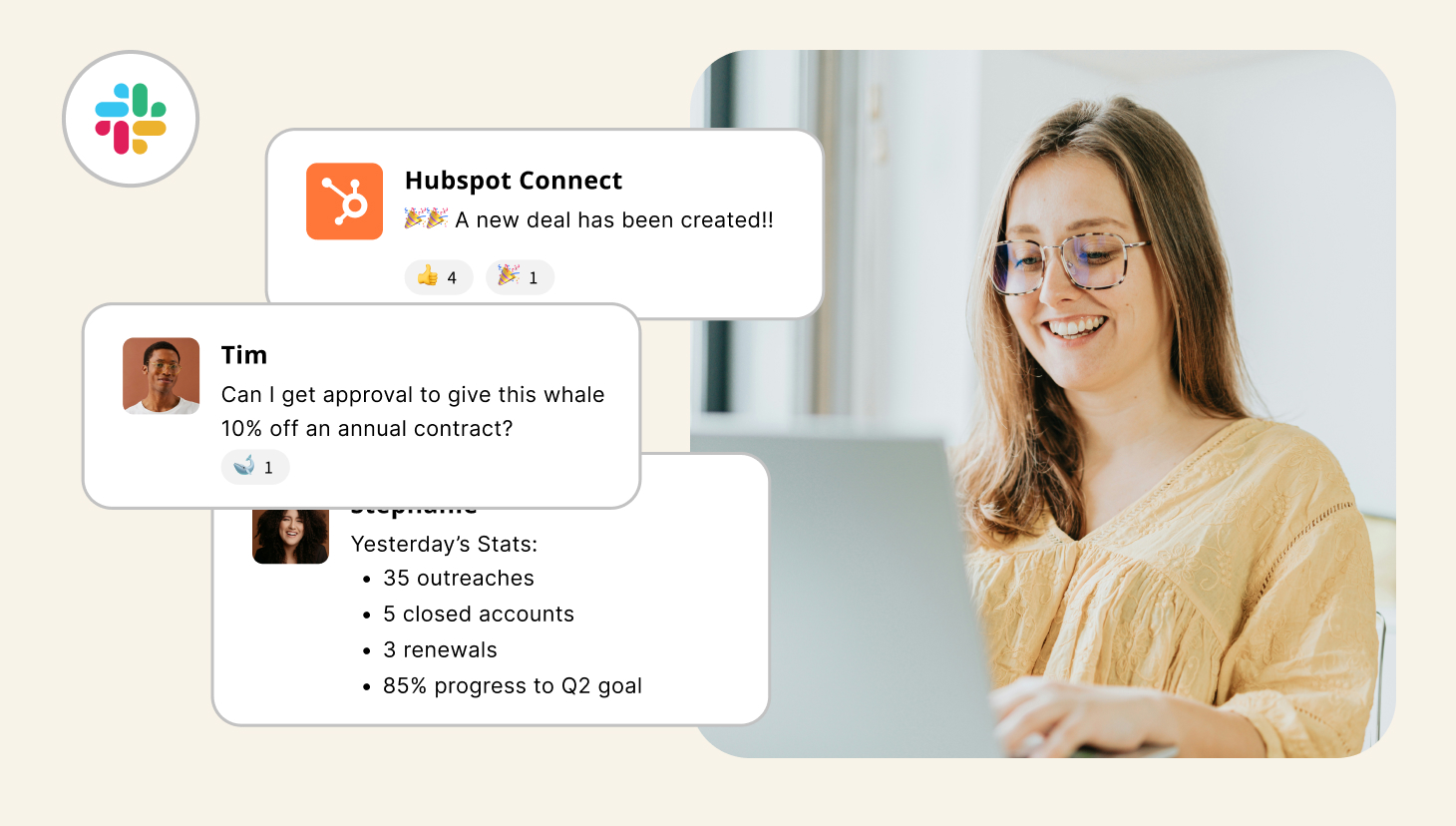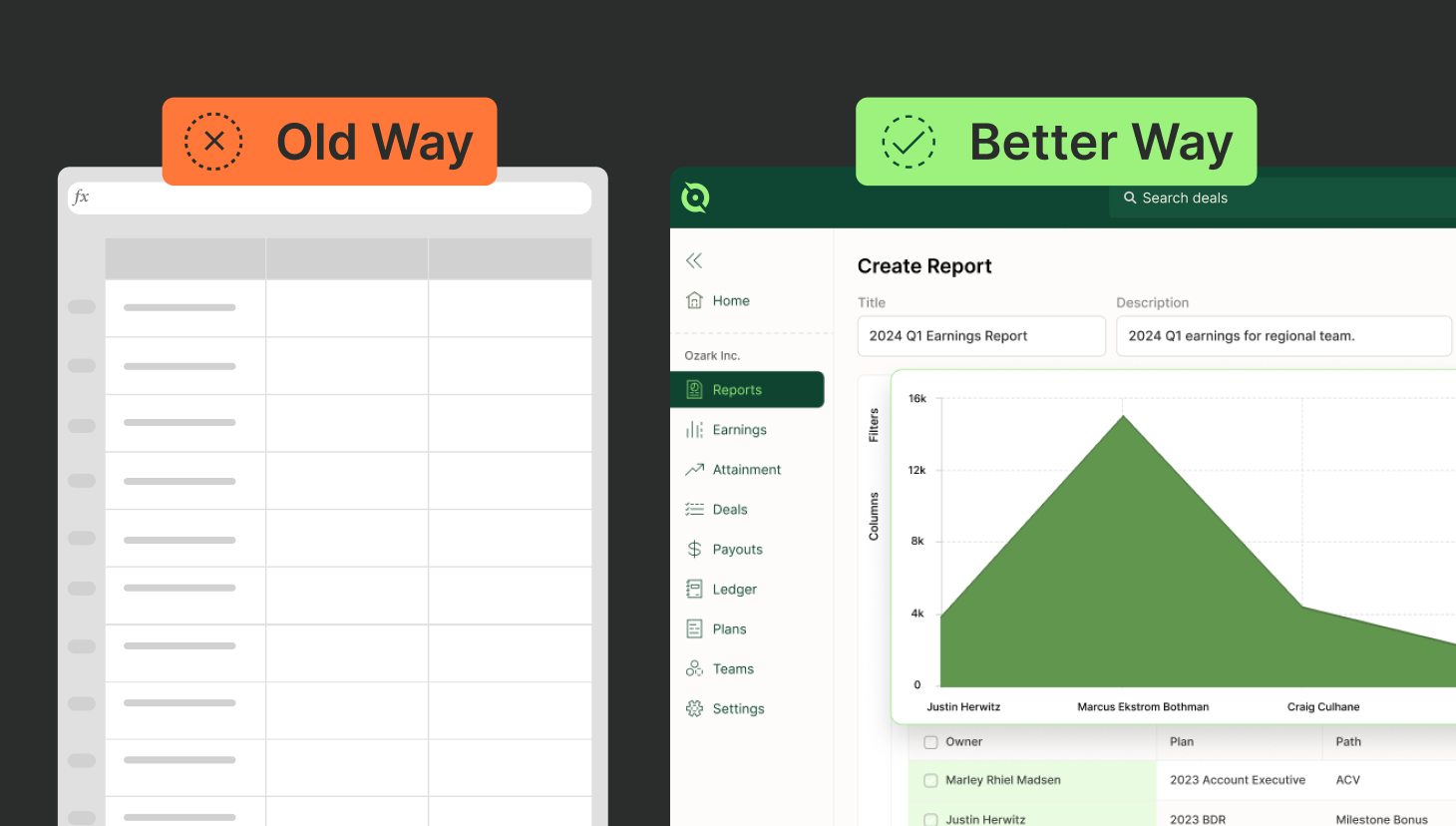“Comptober” is a term we use to signify the critical month of October when RevOps leaders begin planning and strategizing their sales compensation for the upcoming year. Starting the compensation planning process in October allows sufficient time to finalize plans by the new year or the next sales kickoff.
It also gives leadership ample time for thorough data analysis, stakeholder feedback, and strategic alignment, ensuring the final plan is well-structured, motivating, and ready for implementation by the new year.
Now’s the time to start running data and analysis on past performance to shape next year’s comp plans. Not sure where to start? We’re here to help. Continue reading for a step-by-step guide on conducting historical and market data analysis, plus best practices for data-driven decision-making in compensation strategy development.
Design, track, and manage variable incentives with QuotaPath. Give your RevOps, finance, and sales teams transparency into sales compensation.
Talk to SalesWhere to Start: Identifying the Right Data to Analyze
Let’s start by diving into what historical and market data you need to evaluate.
Gather historical data such as:
- Sales Performance Data: Measures individual and team sales achievement, helping with incentive structure optimization and commission adjustments.
- Quota Attainment: Measures how well individual sales reps and teams are hitting their sales targets for a given period. This metric helps identify seasonal trends, star performers, how well the comp plan motivates sales reps, and determines when targets must be adjusted.
- Win Rates: The percentage of deals won versus lost helps assess the effectiveness of sales strategies and determine when to adjust commission rates.
- Average Deal Size: Identifies the average value of sales transactions, showing how commissions affect sales reps’ focus on high-value opportunities.
- Customer Acquisition Costs: The costs associated with attaining new customers, helping determine the profitability of your compensation plan.
- Sales Rep Turnover Rate: Reveals the rate at which salespeople leave the organization, indicating the effectiveness of compensation plans in motivating and retaining talent.
Market Data: The Gains
You also need to gather market data, such as industry benchmarks, competitor analysis, and salary surveys to increase the effectiveness of your incentive plan. You’ll reap the following benefits from leveraging these insights as you start your compensation planning process.
Ensures Competitive Compensation
Market data helps benchmark salaries and incentives against industry standards to attract and retain top talent. Analyzing market data prevents you from underpaying or overpaying employees by aligning compensation with market rates.
Helps You Understand Industry Trends
Leveraging market data enables you to glean insights into current compensation trends and emerging practices, such as new types of incentives or benefits. These revelations help to adjust pay structures, so you remain relevant and competitive.
Informs Strategic Decisions
Data from industry benchmarks, competitor analysis, and salary surveys aid in setting competitive but sustainable compensation packages that align with business goals and budget constraints. These insights prevent guesswork and support decision-making on salary ranges, bonus structures, and commission rates.
Identifies Competitive Positioning
Delving into market data provides a clear view of how competitors are compensating their teams and where you rank, enabling you to make strategic adjustments to stand out in the challenging talent market.
Enhances Employee Satisfaction and Retention
Market data supports transparent communications with employees, showing them that their compensation is aligned with market standards. This ensures employees feel valued and fairly compensated compared to industry peers, reducing turnover rates.
Tools and resources for data collection and management include salary services and industry benchmarks such as:
What You Can Learn from Historical Data
Analyzing past sales performance enables you to identify trends, strengths, and areas for improvement.
Trends such as:
- Seasonal Trends: Recognizing high or low-performance periods and correlating them with market conditions or internal strategies.
- Consistent Top Performers: Identifying high-performing sales reps and teams to understand what drives their success.
- Product or Service Performance: Analyzing which products or services have the highest sales and the factors contributing to their success.
Strengths like:
- Individual and team strengths to leverage in future strategies.
- Effective sales tactics and strategies that contributed to past successes.
Areas of improvement like:
- Underperforming sales reps or teams and diagnosing potential causes. For instance, lack of training or market conditions.
- Inefficiencies in the sales process, such as bottlenecks or extended sales cycles, and suggesting improvements.
How Data Informs Compensation Strategy
Data-driven insights can help RevOps leaders make informed decisions that align with business goals.
| Tactic | How to use data | Example |
| Align Compensation Plans with Business Objectives | Use data to ensure that compensation plans are directly aligned with broader business goals, such as revenue growth, market expansion, or customer retention. | If the business aims to increase market share in a specific territory, the compensation plan could include higher incentives for sales reps who exceed targets in that area. |
| Design Compensation Structures Based on Historical Performance | Utilize historical data to create a balanced and motivating compensation structure that rewards both consistent performers and those who show significant improvement. | Introduce tiered commission structures for sales reps with a history of exceeding quotas to incentivize high performance further. For reps showing gradual improvement, consider introducing milestone-based bonuses to encourage continued progress. |
| Incorporate Seasonality into Compensation Plans | If the data shows the company experiences seasonality, such as higher sales in Q4 and lower in Q1, adjust compensation plans to accommodate these fluctuations. | During peak sales periods, such as Q4 for a retail-focused SaaS company, implement higher commission rates or bonuses to capitalize on increased demand and encourage sales reps to maximize their efforts. Off-Peak Periods: Offer alternative incentives during slower periods, such as additional training bonuses or spiffs for securing early renewals or upsells, to maintain engagement and productivity. |
| Adjust for Market Conditions and Competitor Actions | Use market data to understand industry compensation trends and ensure that the company’s compensation strategy remains competitive. | If market data indicates a rising trend in base salaries for similar roles, consider adjusting your base pay structure to avoid losing top talent to competitors. Consider introducing unique compensation components, such as equity options or flexible benefits, to differentiate the company’s offering in a competitive talent market. |
| Tailor Compensation to Different Sales Roles and Responsibilities | Leverage historical performance data to tailor compensation strategies to different sales roles (e.g., inside sales, outside sales, account managers) based on their unique responsibilities and contributions. | Data will be used to identify which behaviors and outcomes have the most significant impact on achieving business objectives, and compensation plans will be designed to incentivize these activities. |
Incentivize Desired Behaviors and Outcomes | Data will be used to identify which behaviors and outcomes significantly impact achieving business objectives, and compensation plans will be designed to incentivize these activities. | Data will be used to identify which behaviors and outcomes significantly impact achieving business objectives, and compensation plans will be designed to incentivize these activities. |
Best Practices for Conducting Data Analysis
Effective data analysis is crucial for making informed decisions. Here are some tips to help you effectively interpret and leverage the data:
Define Clear Objectives: Determine what you want to achieve with your analysis. For instance, learn what competitors are including in their AE compensation plans. This helps you focus on the right data types and sources.
Understand the Context: Have an understanding of the source and methods used to gather the data. This is especially true when selecting market data sources.
Use Visualizations: Utilizing charts, graphs, and dashboards to visualize your data makes it easier to identify patterns and trends.
Test Your Assumptions: Test your preliminary compensation plan ideas with modeling tools to ensure they are viable.
Collaborate with Others: Involving cross-functional teams such as Finance and HR in the data analysis process is crucial to gain different perspectives and insights for a more complete analysis.
Conduct Regular Reviews: Compensation data analysis is not one and done, it is a recurring process as business, market, and industry conditions and practices continually evolve. This enables you to remain competitive and relevant to attract and retain top talent.
Maintain Transparency: Sharing your findings with relevant stakeholders fosters trust, increases understanding, ensures fairness, and facilitates better decision-making.
Gain a clearer picture for better decision-making by leveraging these data analysis best practices.
RevOps, sales leaders, and finance teams use our free tool to ensure reps’ on-target earnings and quotas line up with industry standards. Customize plans with accelerators, bonuses, and more, by adjusting 9 variables.
Build a Comp PlanPreparing for a Successful Compensation Planning Season
Starting the compensation planning process early allows time for thorough data analysis, feedback, and strategy for a finalized, well-structured plan ready to launch in the new year. Adopt our best practices for conducting data analysis to ensure your compensation plans are competitive, motivating, and aligned with business goals.
Book time with a QuotaPath team member to simplify your compensation planning process and reduce the headaches associated with managing it.




